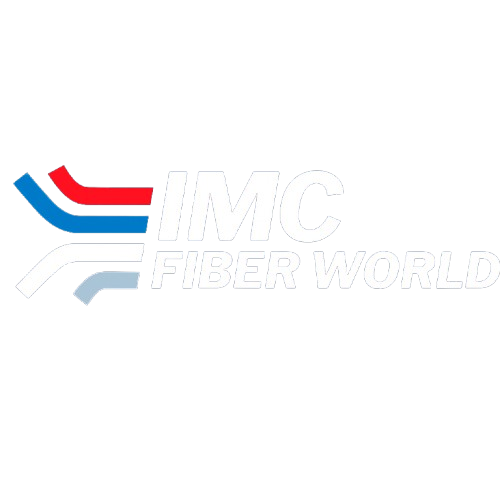If you’re planning to install a fiber optic network, one of the first decisions you’ll face is whether to use single‑mode or multi‑mode fiber optic cables. Each has unique characteristics, advantages, and use cases—choosing the wrong one can lead to unnecessary costs or performance issues.
In this guide, we’ll compare single‑mode and multi‑mode fiber in detail, helping you choose the right solution for your specific application.
What Is Single‑Mode Fiber?
Single‑mode fiber optic cable has a very small core diameter—typically 8 to 10 microns—and carries a single light mode or signal path. This narrow path allows the light to travel straight down the fiber with minimal reflection, resulting in:
Extremely low signal loss
Long-distance data transmission
High-speed capabilities (up to 100 Gbps and beyond)
Common Uses of Single‑Mode Fiber:
Long-haul telecommunications
Metro networks
FTTH (Fiber to the Home)
Data centers with long-distance links
Campus backbone connections
What Is Multi‑Mode Fiber?
Multi‑mode fiber has a larger core diameter—usually 50 or 62.5 microns—and allows multiple light rays (or modes) to propagate simultaneously. These modes bounce within the fiber core and reach the end at slightly different times, which can lead to modal dispersion over long distances.
However, multi‑mode fiber is highly effective for:
Short-distance, high-speed data transfer
In-building networks
Server-to-switch connections
Data center patch cords
Side-by-Side Comparison
Feature Single‑Mode Fiber Multi‑Mode Fiber
Core Size 8–10 µm 50 or 62.5 µm
Distance Support Up to 100 km+ Up to 550 m
Bandwidth Very high Moderate to high
Light Source Laser LED or VCSEL
Typical Use Long-range telecom, backbone LANs, data centers, short links
Cost of Cable Lower Higher
Cost of Equipment Higher (lasers) Lower (VCSELs)
Pros and Cons of Single‑Mode Fiber
✅ Pros:
Supports long-distance transmission
Minimal signal loss
Ideal for high-speed data over vast networks
Future-proof for growing bandwidth needs
❌ Cons:
Higher equipment costs
Difficult to splice and align due to smaller core
Overkill for short-distance applications
Pros and Cons of Multi‑Mode Fiber
✅ Pros:
Lower cost for short runs
Easier to install and maintain
Compatible with affordable LED/VCSEL transceivers
Perfect for data centers and local networks
❌ Cons:
Limited distance and bandwidth
Higher signal dispersion
Not suitable for long-haul telecom or outdoor installations
OM vs OS: Fiber Standards Explained
OS1 / OS2: Standards for single‑mode fiber
OS1: Indoor use
OS2: Outdoor or long-distance applications
OM1 to OM5: Standards for multi‑mode fiber
OM1: 62.5 µm core, lower speed
OM3/OM4: Laser-optimized, used for 10G/40G/100G
OM5: Supports SWDM for more efficient bandwidth use
Which Fiber Type Should You Choose?
The right fiber cable depends on your needs:
Choose Single‑Mode Fiber if:
You’re connecting buildings across large distances
You’re deploying FTTH or metro networks
Long-term scalability is a priority
You can afford higher initial equipment costs
Choose Multi‑Mode Fiber if:
You’re wiring within a building or data center
Distances are less than 500 meters
You want lower transceiver costs
You need high speeds but not long-distance transmission
Example Use Cases
- Internet Service Providers (ISPs)
Use single‑mode to connect cities or towns
Use multi‑mode for local access points or facility wiring
- Enterprise IT Departments
Use multi‑mode for office floor networking
Use single‑mode for connecting different branches or campuses
- Data Centers
Use multi‑mode fiber (OM3/OM4/OM5) for rack-to-rack connections
Use single‑mode for backup, disaster recovery links, or extended data halls
Fiber Compatibility and Transceivers
Don’t forget that fiber types must match the transceiver type:
Single‑mode fiber requires laser-based transceivers (like SFP+, QSFP28)
Multi‑mode fiber works with LED or VCSEL-based transceivers
Also, connector types matter (e.g., LC, SC, ST), and must match your equipment.
Cost Considerations
While single‑mode cables are often cheaper per meter than multi‑mode, the associated equipment is usually more expensive. Multi‑mode setups are often more cost-effective for shorter distances.
For large networks or telecom operations, single‑mode makes financial sense due to lower long-term maintenance and scalability. But for small businesses or localized networks, multi‑mode provides solid value.
Fiber Cables from [Company Name]
Whether you need single‑mode or multi‑mode fiber, [Company Name] offers:
ISO-certified cables
Custom lengths and terminations
Armored and indoor/outdoor options
Quick delivery and expert support
We help you choose the right cable type for your budget and use case.
Talk to a Fiber Expert Today
Need help deciding between single‑mode and multi‑mode fiber?
📞 Call us: [Phone Number]
📧 Email us: [Email Address]
🌐 Visit: [Company Website]
Get expert guidance, competitive pricing, and high-performance fiber products—all from a manufacturer you can trust.
